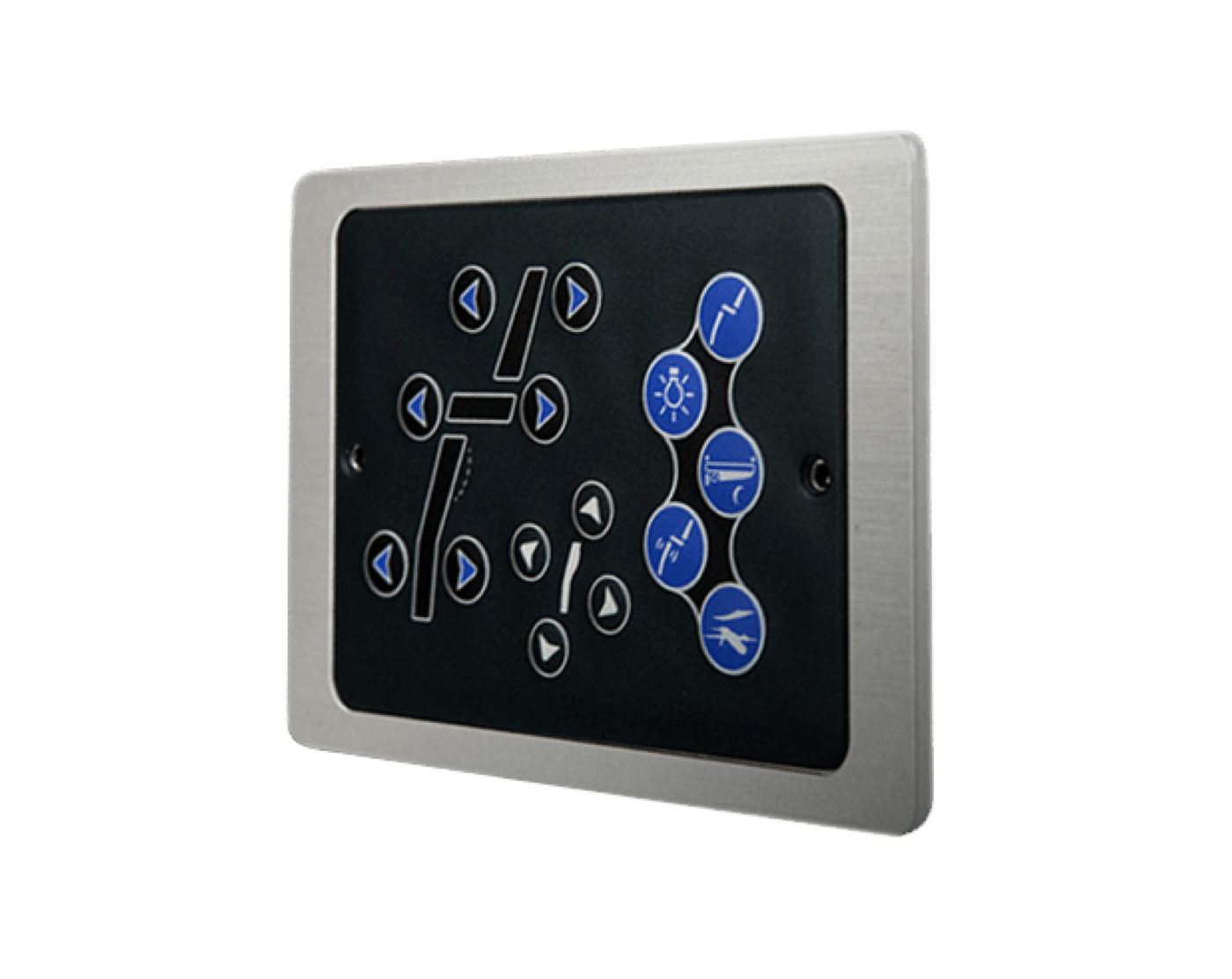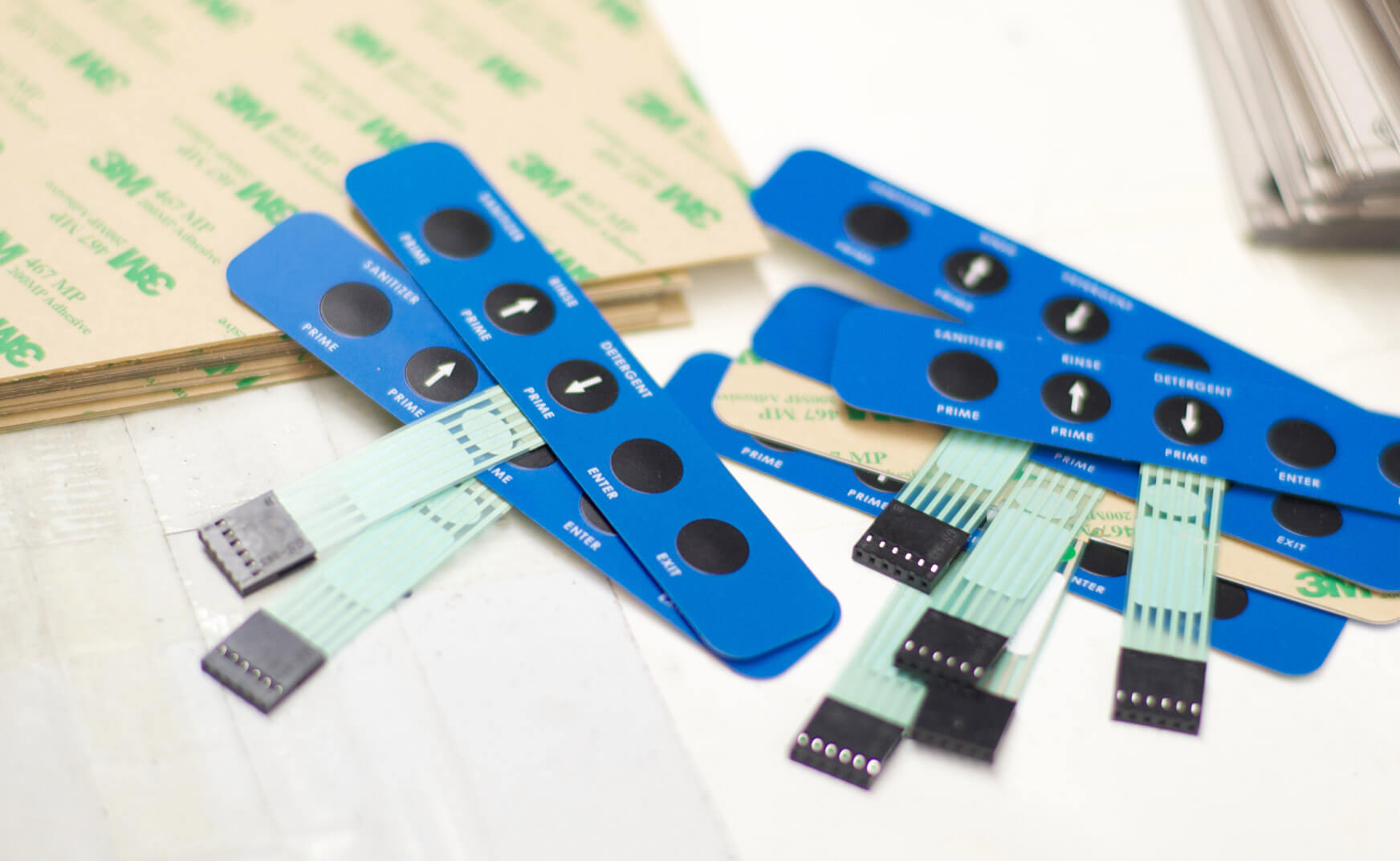Comprehending the Significance of Membrane Switches in Interface
Membrane buttons are indispensable parts in the design of efficient interface, promoting not just capability however additionally improving aesthetic charm and customer interaction. Their special attributes, such as resistance to personalized styles and environmental factors, make them ideal for a diverse array of applications throughout numerous sectors. As we discover the future trends and various benefits related to Membrane technology, it comes to be clear that these switches are extra than just parts; they stand for a merging of advancement and functionality. The implications of this innovation on user experience deserve checking out additionally.
What Are Membrane Switches?

The spacer layer, which includes glue residential properties, enables the separation of the circuit layer from the overlay, ensuring that the button continues to be in a non-activated state till pushed. When stress is put on the overlay, it presses the spacer layer, linking the void and completing the circuit in the underlying layer. This style not only minimizes the physical room required for conventional mechanical switches but likewise improves the toughness of the device, as Membrane buttons are generally resistant to dust, moisture, and other ecological factors.
Generally discovered in applications varying from consumer electronics to clinical gadgets, Membrane switches are essential to modern innovation, offering a straightforward and reliable user interface that aligns with modern style demands.
Advantages of Membrane Switches
While numerous switch modern technologies exist, Membrane Switches offer unique advantages that make them particularly desirable in various applications. Among the primary benefits of Membrane buttons is their portable layout, which enables space-saving implementations in gadgets where realty is limited. Their slim profile not only improves visual charm however also assists in lightweight building and construction.
An additional significant advantage is their resistance to environmental factors. Membrane switches are typically sealed against dampness, dust, and pollutants, making them excellent for use popular settings, such as clinical devices and industrial tools. This sturdiness prolongs the lifespan of the switch, decreasing maintenance costs and enhancing reliability.
Additionally, Membrane buttons can be personalized to meet details layout needs, integrating special graphics and shades that improve customer interaction. Their responsive feedback options can likewise be customized to offer a gratifying individual experience. Furthermore, Membrane buttons are economical, particularly in high-volume applications, as they can be generated successfully.
Applications in Different Industries

In the consumer electronic devices sector, Membrane buttons are common in gadgets such as microwaves, washing equipments, and push-button controls. Their tactile feedback and visual options improve individual experience while supplying a smooth, contemporary look. Furthermore, auto makers use Membrane buttons in control panel controls and infotainment systems, where area is limited, and individual interaction is essential.
In addition, the industrial market leverages Membrane switches in control panels for equipment and devices, permitting for user-friendly procedure in typically extreme atmospheres. Their resistance to chemicals and moisture makes sure durability and reliability in these applications. Generally, the versatility of Membrane Switches adds dramatically to their extensive use, making them vital in various technological domain names.
Layout Factors To Consider for Membrane Switches

When designing Membrane switches, numerous essential considerations need to be taken into consideration to make sure optimum performance and customer experience. To start with, the selection of products is important; selecting long lasting, top quality substrates can enhance the button's longevity and resistance to environmental variables such as dampness and temperature fluctuations.
Second of all, the design pop over to these guys of the visuals overlay need to prioritize quality and simplicity of use. Symbols and text must be understandable, and the format needs to assist in user-friendly interaction (membrane switches). Furthermore, responsive comments is vital; incorporating a tactile dome or various other devices can improve the user experience by offering physical verification of activation
An additional crucial aspect is the switch's electric performance. Developers should make certain that the conductive traces are appropriately created to decrease resistance and avoid signal interference. This entails evaluating the needed actuation pressure and making sure compatibility with the electronic parts they will certainly interface with.

Future Fads in Membrane Technology
As modern technology proceeds to development, Membrane buttons are poised to progress dramatically, driven by developments in materials and producing strategies. One emerging pattern is the consolidation of advanced materials, such as versatile substrates and conductive inks, which boost longevity and reduce the total weight of Membrane switches. These materials not just enhance the responsive response yet also enable for the style of buttons that can withstand harsher ecological conditions.
In addition, the assimilation of touch-sensitive modern technologies is changing standard Membrane Switches into more interactive individual interfaces. Capacitive touch sensing units embedded within Membrane switch panels can offer a more responsive and instinctive customer experience, lining up with the expanding demand for sleek, contemporary layouts in customer electronic devices.
Furthermore, advancements in printing methods, such as digital and 3D printing, allow quick prototyping and personalization of Membrane buttons. This adaptability allows suppliers to respond much more swiftly to market demands and customer preferences.
Lastly, sustainability is coming to be a substantial emphasis, with producers discovering green materials and procedures. As these trends unfold, the future of Membrane modern technology assures improved performance, visual allure, and this post ecological duty, strengthening their function in advanced interface throughout numerous sectors.
Verdict
In final thought, Membrane Switches represent a crucial component in the design of individual interfaces, combining capability with aesthetic adaptability. As innovations in innovation proceed, the evolution of Membrane switches is expected to more improve individual interfaces, driving innovation and boosting use in a significantly intricate technical landscape.
Membrane important link buttons are important elements in the design of efficient user interfaces, helping with not just performance yet also improving aesthetic appeal and user interaction.Membrane Switches serve as an important part in different customer interfaces, helping with a smooth communication in between users and digital gadgets.While numerous switch innovations exist, Membrane Switches deal distinct benefits that make them especially desirable in numerous applications.Furthermore, Membrane buttons can be personalized to meet specific layout requirements, including special graphics and colors that improve individual communication.In verdict, Membrane Switches represent an essential element in the design of user interfaces, integrating capability with aesthetic flexibility.